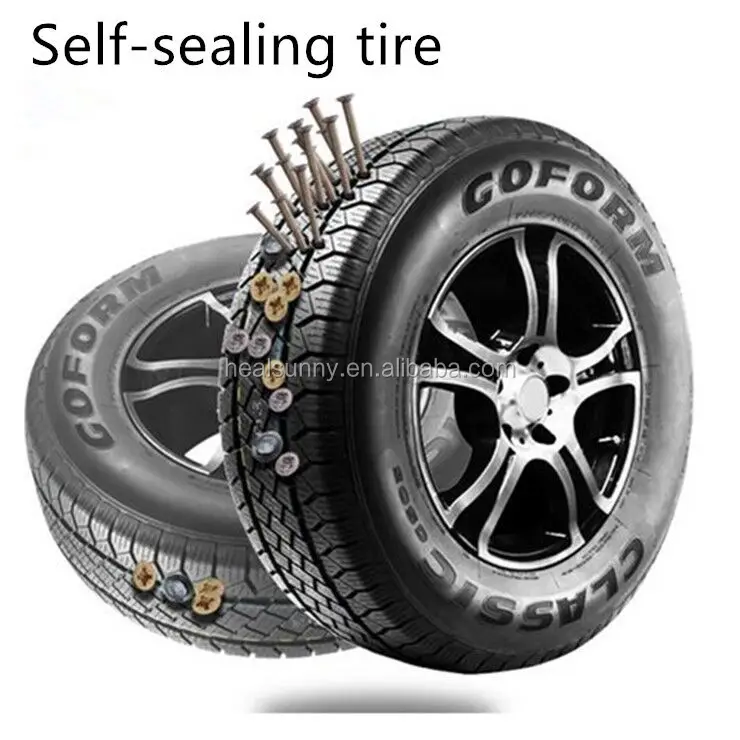Out of office reply: on. Work phone: off. Suitcase: packed. Car: fueled, checked and ready to go. Once you hit the road, you instantly switch into holiday mode. Nothing can get between you and your well-deserved escape. Unless it can.
All it takes to put an end to your road trip is a single nail, a broken bottle, or a particularly sharp rock. These obstacles may not look like much on the road, but they can quickly damage your tire, deflate your holiday enthusiasm and leave you stranded if you don’t have a spare.
With ContiSeal™, you can set off on your holidays without worrying about a puncture. This innovative tire technology immediately seals punctures, so you can keep on rolling – to the beach, to the pool, or wherever else your road trip takes you.
Watch ContiSeal™ in action as we put self-sealing tires to the test on the Contidrom test track.
ContiSeal™ seals 80% of tire punctures immediately.
ContiSeal™ seals 80% of tire punctures, so you don’t have to change your tire, call for help or wait for roadside assistance.
ContiSeal™ offers a simple solution to a seemingly small challenge that can create big problems. Drove over a nail on the way to the beach? No worries! Rolled across broken glass on the road? Your tire has already sealed the puncture! Encountered a jagged rock on your road trip? ContiSeal™ has you covered!
No more need to immediately change a tire, walk to the next garage or wait for roadside assistance. Simply keep on driving, even with a punctured tire.
On miles and miles of open road, something as tiny as a nail, a piece of glass or a sharp stone can cause damage to your tire tread in an instant. Even a puncture smaller than 5 mm in diameter can lead to a rapid loss of air pressure and cause a flat tire. With normal tires, that could seriously disrupt your holiday plans.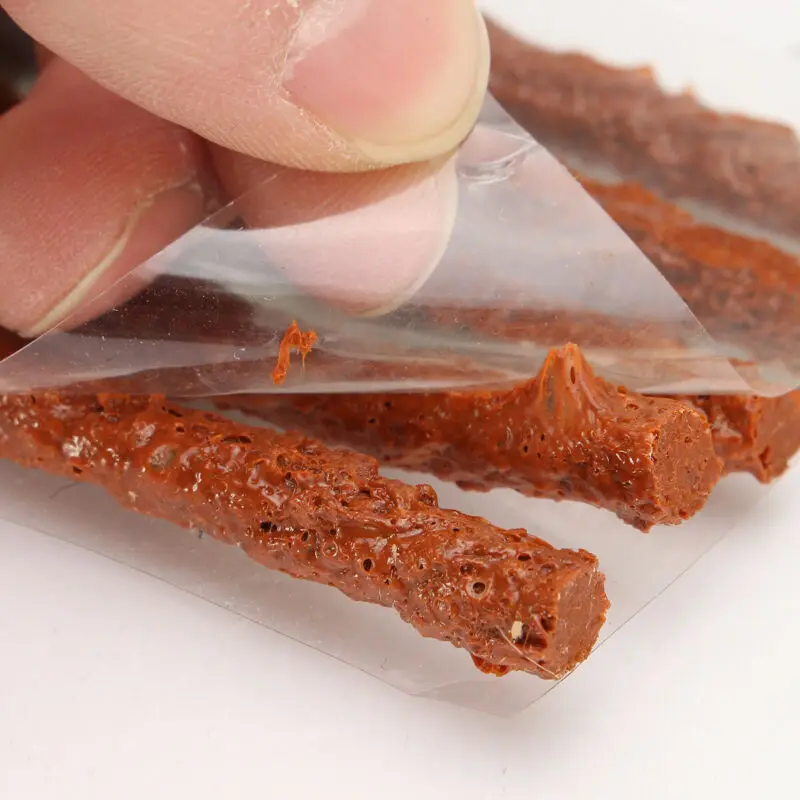
With ContiSeal™, 80% of all punctures are fixed instantly. A sticky, viscous sealant layer inside the tire closes up damage up to 5 mm in diameter. With this unique tire technology, you don’t need a spare tire or roadside assistance. Simply continue driving like nothing happened.
How does ContiSeal™ tire technology work?
A sticky, viscous sealant layer fixes tread damage up to 5 mm in diameter. It traps the air inside, keeps the tire inflated and your car mobile. It works instantly, even if the puncturing object becomes dislodged.
How do I drive with ContiSeal™ tires?
The technology has no impact on the driving experience or the handling of your car under normal circumstances. A Tire Pressure Monitoring System (TPMS) is, however, recommended.
How can I find tires with ContiSeal™ technology?
ContiSeal™ tires are marked clearly with a symbol on the sidewall and are compatible with all commonly available rims.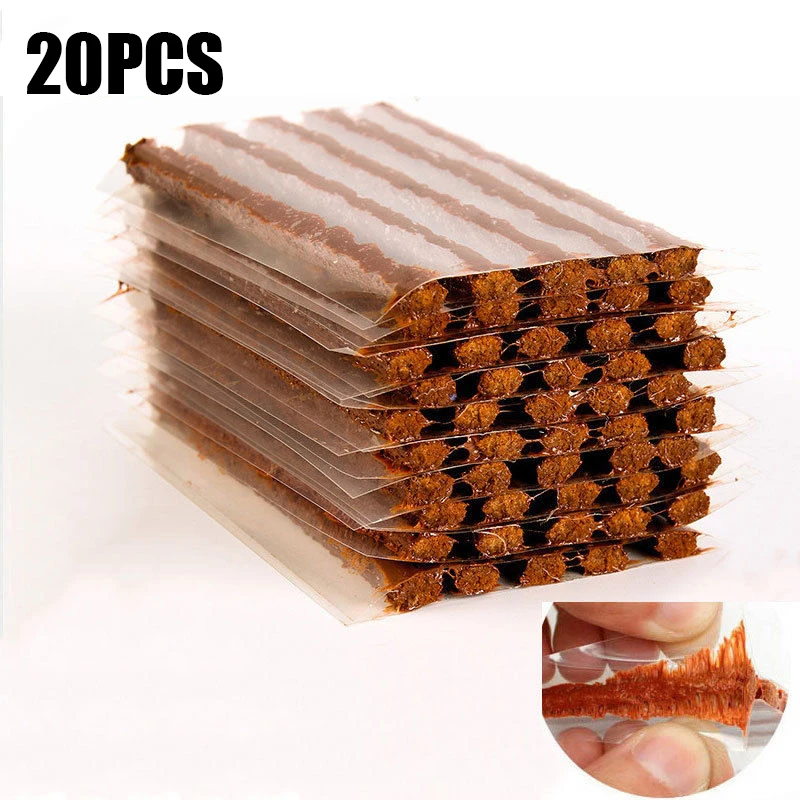 They are mounted, changed and used like any standard equipment tires.
They are mounted, changed and used like any standard equipment tires.
  Show All 6 photos
Inside the tech keeping you on the road.
Inside the tech keeping you on the road.
It’s annoying and potentially dangerous to get a flat tire, and while tires have improved immensely over the years, it’s still possible to pick up the nail that will ruin your day. So what’s a motorist to do?
There are some options, and the best-known are run-flat tires and self-sealing tires. Naturally, each has its good and bad points, and you should know the score before you plunk down your cash.
The idea behind both is that you can continue driving even when your tire has been punctured, but they’re completely different in how they do this. Run-flat tires will lose some or all of their air if they’re punctured, but they still support the vehicle. Self-sealing tires plug up the hole after a puncture, so the air inside doesn’t escape.
Self-sealing tires plug up the hole after a puncture, so the air inside doesn’t escape.
Most run-flat tires use one of two technologies. Self-supporting run-flats have a very stiff, reinforced sidewall. If the tire loses air, the sidewall stays on the rim and holds up the vehicle. This is the most common type of run-flat.
Support ring run-flats have a thick ring, made of hard rubber or other firm material, which encircles the inside of the rim. If the tire loses air, the ring supports the vehicle as you drive.
Self-sealing tires use a different approach. They contain an inner layer of sealant material along the tread. If a nail or other foreign object punctures the tire, the sealant layer closes the hole to prevent the air from escaping, and the tire stays inflated.
Both run-flats and self-sealers are all about the tread. A cut in the sidewall will compromise a self-supporting run-flat tire’s ability to hold up the vehicle. Self-sealing tires don’t have a sealant layer in the sidewall, and they can only handle punctures up to a certain size in the tread.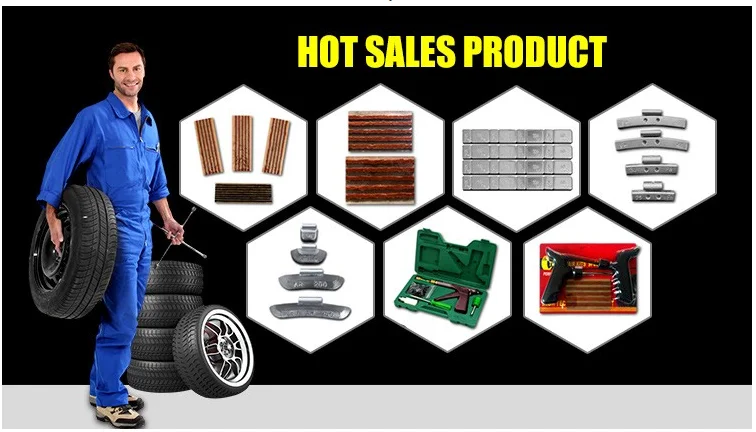
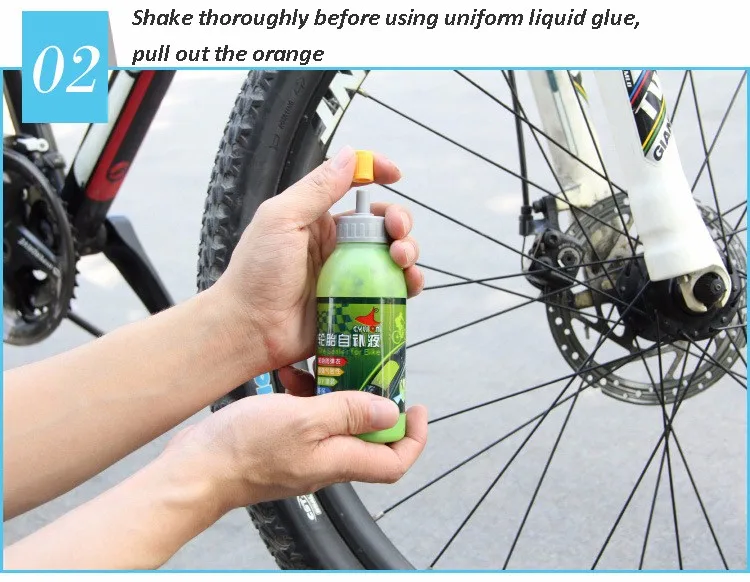 Rather than dissipate energy along rough roads, it transmits it into the cabin. While run-flats are much better today than when they first came out in the 1980s, they can still produce a very firm, harsh ride.
Rather than dissipate energy along rough roads, it transmits it into the cabin. While run-flats are much better today than when they first came out in the 1980s, they can still produce a very firm, harsh ride. Manufacturers recommend that before fixing a puncture, the technician should dismount the tire and inspect the interior to be sure it can be saved. If it can’t, that brings us to the next point…
Manufacturers recommend that before fixing a puncture, the technician should dismount the tire and inspect the interior to be sure it can be saved. If it can’t, that brings us to the next point… The sealant layer is not for deep cuts across the tread, or cuts or punctures in the sidewall.
The sealant layer is not for deep cuts across the tread, or cuts or punctures in the sidewall.Even if your car doesn’t have run-flat tires, you may still open the trunk and find there’s no spare. In that effort to shed weight, some manufacturers give you conventional tires, along with a can of sealant that you spritz into the tire to plug up the hole, and an air pump that you plug into the car’s power outlet and use to inflate the tire.
When you take the tire in for repair, be sure to tell the technician that the tire’s been treated with goop.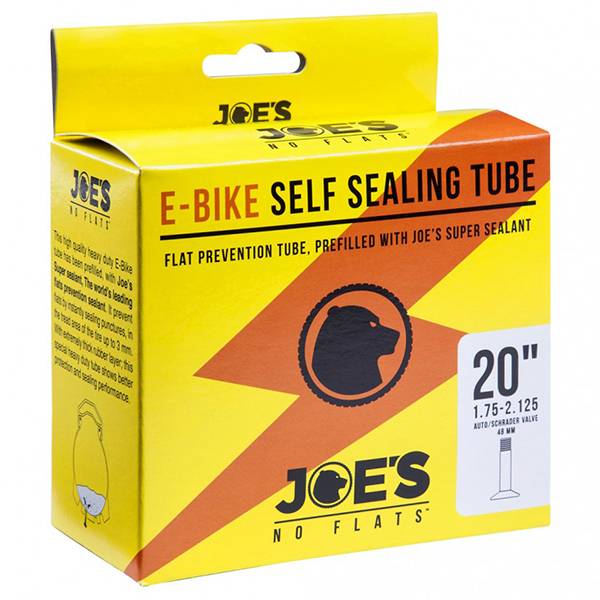 Sealant has a shelf life, so periodically check the date on the can, and if necessary, replace it with a new one. Tires never pick a good place or time to go flat, and you’ll thank yourself that you did.
Sealant has a shelf life, so periodically check the date on the can, and if necessary, replace it with a new one. Tires never pick a good place or time to go flat, and you’ll thank yourself that you did.
Jil McIntosh
See more
Jil McIntosh writes about new cars, antique and classic cars, and the automotive industry. A member of the Automobile Journalists Association of Canada (AJAC), she has won several awards for her writing, including Journalist of the Year in 2016. In addition to testing new vehicles, she owns two from the 1940s.
According to statistics, the probability of a tire puncture occurs every 75,000 km on European roads, but on the roads of some countries in Southeast Asia this happens much more often - once every 3,000 km.
The Self-Sealing technology is designed to seal most punctures in the tread area.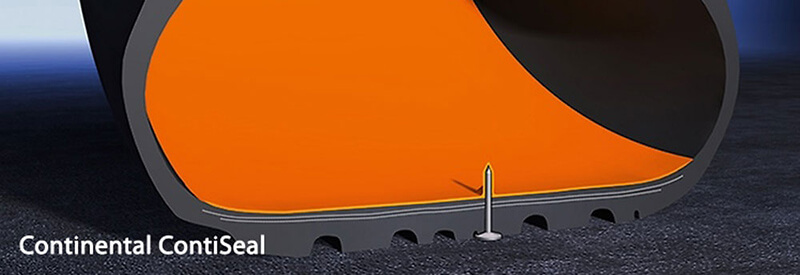
Technology Brief: Inside tire tread rubber is coated with a layer of special material that instantly "tightens" small punctures.
tires made with this technology are of standard construction except for an additional under-tread layer coated with a self-sealing puncture sealing compound that is capable of permanently or permanently sealing most punctures from nails, bolts or screws up to 6mm in diameter ( 85% of all punctures). Air leakage is prevented as soon as a puncture occurs, so that the tire either recovers completely by itself or at least loses air very slowly. nine0014
Conti Seal™ (Continental)
Tire Technology: Continental ContiSport Contact 3
ContiSeal tires are supplied as original equipment on the VW Passat CC.
Puncture resistance: up to 5 mm
These tires are identical to regular tires in all respects except for the weight, which is increased by a kilogram due to the extra layer.
Seal Inside (S.I.) (Pirelli)
Technology tire: Pirelli Cinturato P7
Within the same range, the performance characteristics (rolling resistance, comfort, noise level, dry and wet performance) of tires with Seal Inside technology do not differ from standard tyres.
Seal Inside technology does not include the use of special discs and TPMS (tire pressure monitoring system) for safe installation on the vehicle; and can be applied to any vehicle depending on the tire size. nine0014
K-Seal (Kumho)
In early January 2014, Kumho Tire announced the launch of its first self-sealing model for the South Korean market.
Technology tire: Kumho Majesty Solus
Puncture resistance: up to 5 mm
Approximately 10% heavier than a standard tire without technology.
K-Seal tires do not need to be repaired or replaced immediately after a puncture.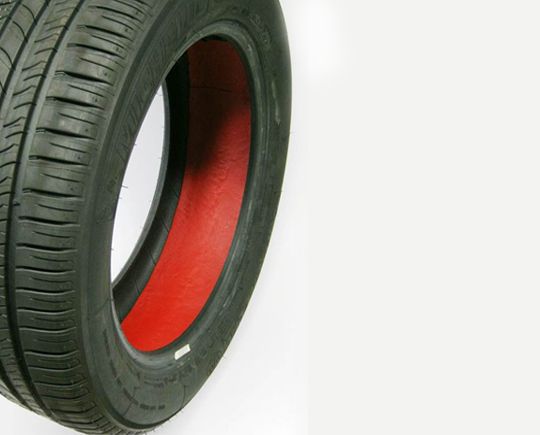
SelfSeal (Michelin)
The main feature is a layer of a special self-tightening polymer several millimeters thick applied on the inside of the tread. Slightly sticky to the touch, yellow polymer (to distinguish it from ordinary rubber during disposal) based on rubber (operating temperature range - from -50 to +80 degrees Celsius) retains its shape, but is able to tighten punctures less than 6 mm in diameter.
PROS: the comfort and handling of the car do not change. Since there is no pressure drop, these tires do not require tire pressure sensors to fit. Can be fitted to any vehicle, no special wheels or suspension adaptations required. CONS: if the sidewall is damaged, further movement is impossible (although according to statistics, such damage is much less common than punctures protector ). Tightening of punctures with a diameter of more than 6 mm is not guaranteed. WHERE USED: Coming to the replacement market in 2015.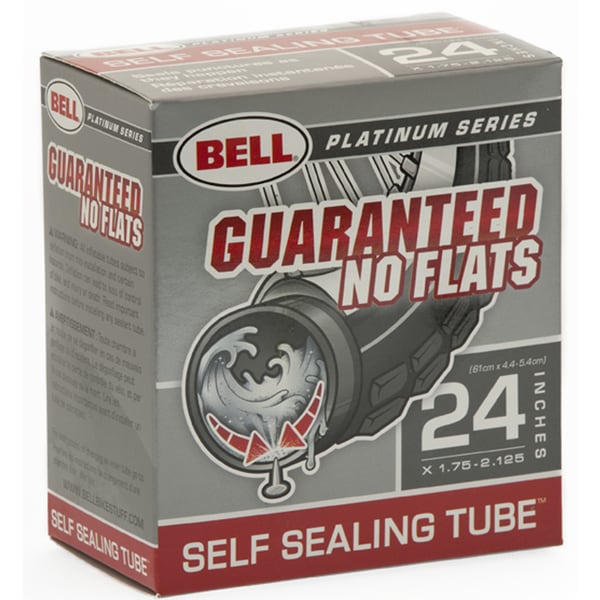
Weight is 500g higher than a regular tire, which will help reduce fuel consumption by 0.4l/100km compared to run-flat tyres.
According to the manufacturer, punctures up to 6 mm are fully tightened and for the entire service life of tire .
Advantages of this technology:
- reduced need to replace tires due to punctures; nine0003 - there is no need to carry a spare tire in the trunk, the total amount of space increases and the load on the car decreases;
- no need to have an air pressure sensor (required for RunFlat tires).
Whether self-sealing tires become mainstream depends on how interesting the technology is to drivers: the higher the popularity of tires, the more affordable they will become for more and more categories of car enthusiasts.
In the 21st century, Run Flat tires have become very popular. What is it? Literally translated, the name of the technology means “to ride flat”.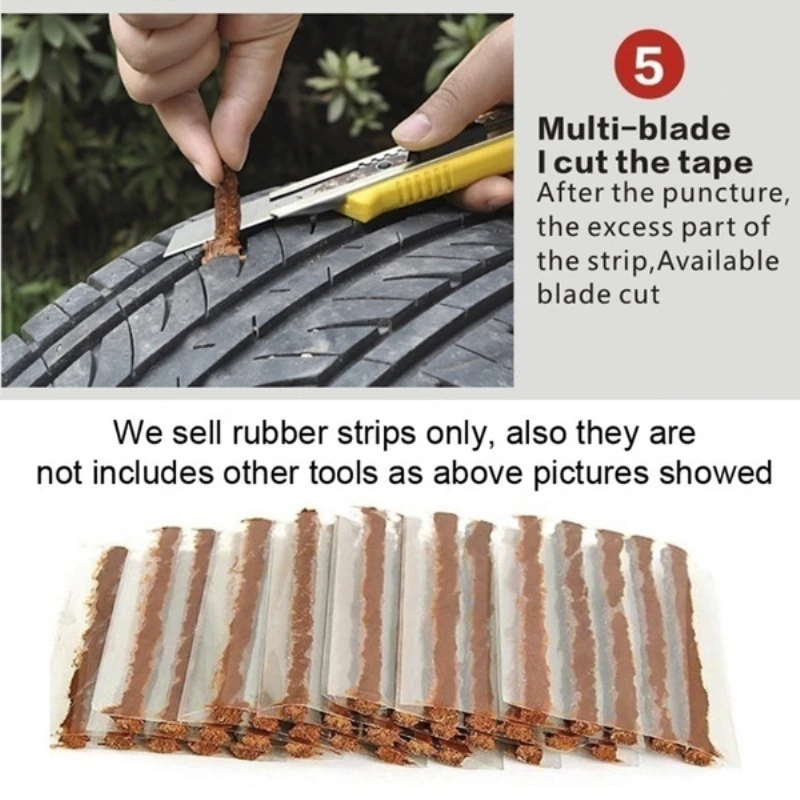 In fact, this name hides a special kind of tire that allows you to continue driving at zero pressure. We will tell you more about the features and benefits of such tires.
In fact, this name hides a special kind of tire that allows you to continue driving at zero pressure. We will tell you more about the features and benefits of such tires.
The main difference of Run Flat tires is the reinforced sidewall, which does not allow the elastic material to wrinkle under the weight of the car. In the event of a puncture, you can drive to a service center where the damaged wheel will be repaired. When using Runflat technology, experts recommend adhering to the 80/80 principle - driving up to 80 kilometers at a speed of no more than 80 km / h. nine0014
What does it give compared to conventional tires? The main thing is maximum convenience. Run flat tires allow you to keep moving, complete all your tasks and choose the most convenient moment for a visit to the service center. The technology has other advantages, which we will discuss later.
Runflat tires are different from their counterparts that lack reinforced sidewalls.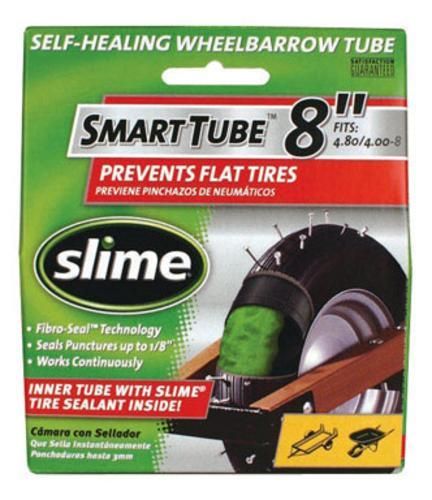 Among their features are:
Among their features are:
special materials - heat-resistant compound protects the tire from deformation and damage when driving with zero pressure; nine0014
greater strength of the cord and breaker - they bear increased loads;
increased width of the side frame;
a special tread structure that increases the rigidity of the tire.
Knowing what Run Flat technology is, you will be able to enjoy all its benefits. But how can such an effect be achieved? In the manufacture of runflat tires, manufacturers use three technical solutions: nine0014
Support ring. It is a rigid insert that forms a layer between the rim and the tread when the pressure is excessively reduced. These run flat tires are the most common. Design features allow you to install them on SUVs, full-size crossovers, executive sedans and other heavy vehicles.
Reinforced sides. These tires use very wide beads that contain rigid inserts. What does it give in practice? This Runflat technology reduces the depth of subsidence in case of damage. Even if the tire is pierced with a nail or other object, it retains its original shape. This greatly improves handling in an emergency. nine0014
These tires use very wide beads that contain rigid inserts. What does it give in practice? This Runflat technology reduces the depth of subsidence in case of damage. Even if the tire is pierced with a nail or other object, it retains its original shape. This greatly improves handling in an emergency. nine0014
Self-sealing tyres. A similar kind of Runflat technology has appeared relatively recently. It involves the use of inserts made of synthetic material - polyamide. In the event of a tread failure, the inside seals quickly to prevent air leakage. Thanks to this, the tires retain not only their shape, but also a constant pressure. Run Flat based on a polyamide coating copes with holes up to 5 mm in diameter - this corresponds to the thickness of screws, nails and wire. nine0014
In most cases, manufacturers use the technology name Run Flat (“Run Flat”) - it is accepted in the USA, Europe, Russia and many other countries. However, there are other options, which we will discuss in more detail.
However, there are other options, which we will discuss in more detail.
The following abbreviations may be an alternative:
RFFT;
AOE; nine0014
MOE;
RSC;
R.O.F.
SSR;
ZPS.
These letters are applied to the sidewall of the tire (most often they can be seen next to the model name). In some cases, the designation is indicated among other technical characteristics - speed index, estimated resource and permissible load. nine0014
Alternative names also include Flat Run and Run on Flat. They are used by tire and car manufacturers who promote their own commercial names for this design.
If a run-flat tire is damaged, the car will only sag a few millimeters - it will be difficult to notice the differences. What does this mean in practice? The driver may fail to recognize the damage in time and continue driving. However, the behavior of the tires will be radically different: they will “pull” the car in one direction, significantly impairing handling and increasing the risk of an accident. nine0014
However, the behavior of the tires will be radically different: they will “pull” the car in one direction, significantly impairing handling and increasing the risk of an accident. nine0014
Why then do we need run-flat tires? They are designed for modern passenger cars that are equipped with an ESP stabilization system. The electronic assistant will adjust the position of the steering mechanisms, compensating for damage to the wheels. Thanks to this, you will be able to reach your destination without risking your life.
However, run flat tires are compatible with any car, you just have to take into account the features described above. They are mounted on standard wheels - both alloy and steel. However, beading runflat tires will require special equipment. They are put on a metal rim using an Easymont machine, which mechanics call the "third hand". nine0014
Run flat tires are available in both summer and winter tires. What does this mean? You can enjoy their benefits all year round, with no exceptions for the cold or warm season. These tires also have wear indicators that help you choose the best time to service your car.
These tires also have wear indicators that help you choose the best time to service your car.
The main advantage of runflat tires is that they help prevent accidents. In the event of a puncture, the driver will not lose control, and the electronic stabilization system will help avoid skidding on the road. In addition, you do not have to do emergency tire changes. You can safely complete all daily activities and only then contact the service center. nine0014
The technology used in runflat tires eliminates the need for a spare wheel. Accordingly, the useful volume of the trunk increases. However, experts recommend taking a “spare tire” for Runflat tires on a long journey: workshops with suitable equipment are rarely found far from large cities.
The Run Flat technology also has its drawbacks. Additional inserts in such tires increase the mass and rigidity of the wheel. What does this mean in practice? Run flat tires increase the load on the suspension, accelerating the wear of some of its parts.